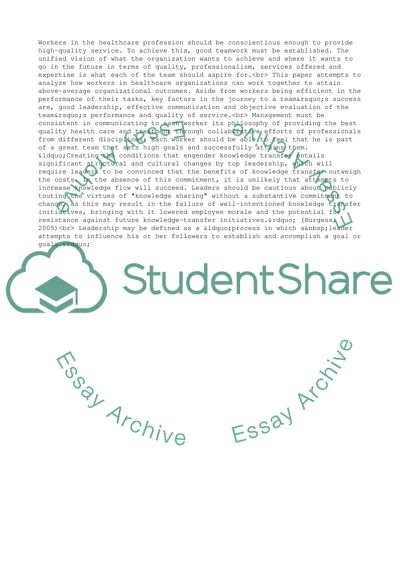Cite this document
(Knowledge-Sharing Dilemmas Term Paper Example | Topics and Well Written Essays - 2675 words, n.d.)
Knowledge-Sharing Dilemmas Term Paper Example | Topics and Well Written Essays - 2675 words. Retrieved from https://studentshare.org/business/1542090-organisational-management-in-health-care
Knowledge-Sharing Dilemmas Term Paper Example | Topics and Well Written Essays - 2675 words. Retrieved from https://studentshare.org/business/1542090-organisational-management-in-health-care
(Knowledge-Sharing Dilemmas Term Paper Example | Topics and Well Written Essays - 2675 Words)
Knowledge-Sharing Dilemmas Term Paper Example | Topics and Well Written Essays - 2675 Words. https://studentshare.org/business/1542090-organisational-management-in-health-care.
Knowledge-Sharing Dilemmas Term Paper Example | Topics and Well Written Essays - 2675 Words. https://studentshare.org/business/1542090-organisational-management-in-health-care.
“Knowledge-Sharing Dilemmas Term Paper Example | Topics and Well Written Essays - 2675 Words”, n.d. https://studentshare.org/business/1542090-organisational-management-in-health-care.


